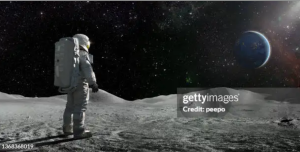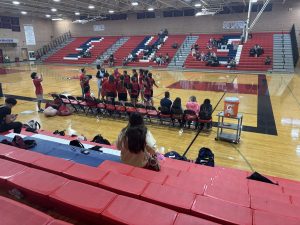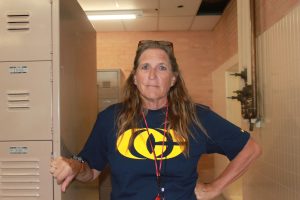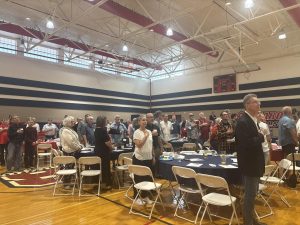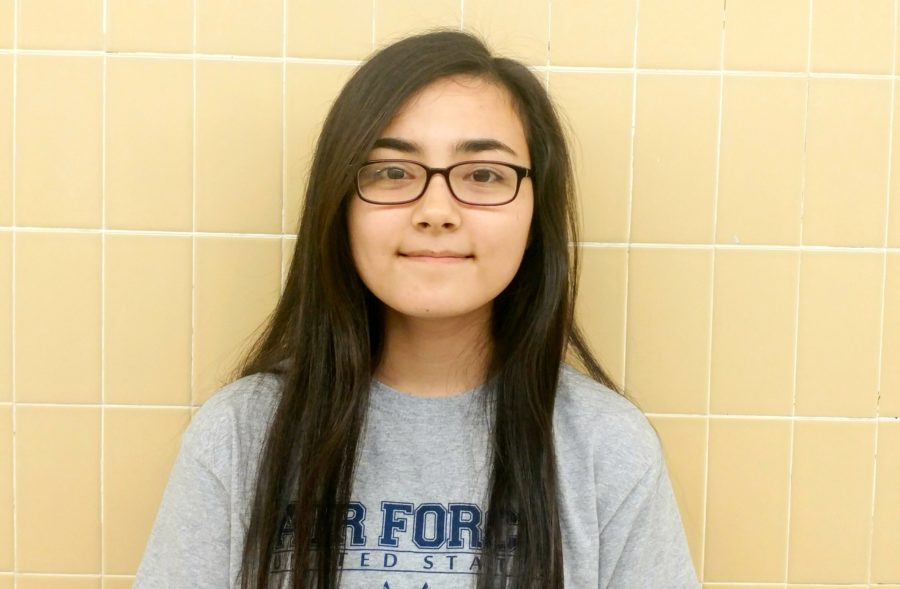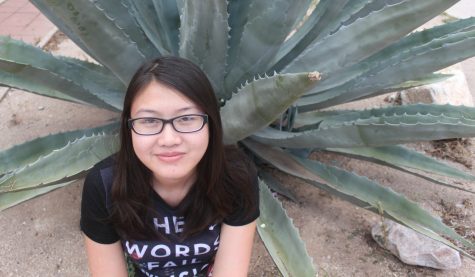Living After the Tsunami
March 10, 2017
March 11, 2011. At the Misawa Air Force Base in the Aomori Prefecture of Japan, a young Japanese-American girl felt the world tremble beneath her feet.
It was on a Friday afternoon in early spring. The weather was cold; a little bit of snow was still clinging on from winter. Young 5th grader, Kalena Tyo, was goofing around with two friends in her school’s band room.
Suddenly she felt it – the ground shifting beneath her. It was an earthquake.
Due to Japan being located on the “ring of fire” (where continental and oceanic plates meet), earthquakes are quite common. So it was definitely not Tyo’s first time experiencing one. However, the kind of earthquakes they usually have are small and short-lived. This one was different. It was so strong, and didn’t seem to end.

“We were like, ‘this isn’t right’,” Tyo recalled what she and her friends first thought. “We all went outside (which is a bad and dangerous idea to do during an earthquake)… and [saw] the trees were swaying and even the windows were moving…”
Tyo and her friends stood outside for a good minute until their band teacher found them and called them back in. Inside, the school’s tall, huge metal doors (locked to keep intruders out) wobbled, the hallway tipped, and Tyo even remembered a teacher falling down the stairs.
“I don’t know how long it lasted, but the earthquake stopped eventually,” Tyo said. A mother of a friend who worked at the school then took Tyo to a nearby Youth Center.
During this time Tyo’s mother was at home off-base, her older sister was at a high school much farther away, and her father was temporarily deployed in Afghanistan. “A lot of the kids lived off the base… and so everybody couldn’t see their parents ‘cause the gate entrances to the base were closed.” Tyo explains how scary it was for the families to be separated. “They didn’t allow anybody in, but they let people go out, so it took them a long time to go home.”
For a couple of hours Tyo waited, but she doesn’t remember it too much. She only remembered that they were experiencing a lot of aftershocks. A friend of Tyo’s sister’s father, a commander at the base, went to pick her up and drop her home. She was then finally reunited with her mother and sister.
When they were all together, Tyo’s mother’s first priority was for them to go buy food and supplies.Because of the earthquake, they had no electricity for three days (for the base it was five days). “We stayed at home with our two chihuahuas and my bird,” Tyo chuckles. “I was kind of worried for him (the bird) because parakeets need to be warm, and the heater inside the cage was off. But he was fine.”
Tyo and her family luckily had a gas stove that worked, and they brought a lot of water to make tea or boil instant ramen. They continued to have no electricity until the third day when the lights finally came on. Tyo was sitting with her mother and sister under kotatsu (a japanese heated table), and the first thing Tyo thought was how good it was to come out of the dark. Then the TV came on, and they saw the news.
“While we were in the house trying to get through the darkness, in another place there were people dying, and missing, and houses were destroyed… from the tsunami,” Tyo stopped, getting emotional thinking back.
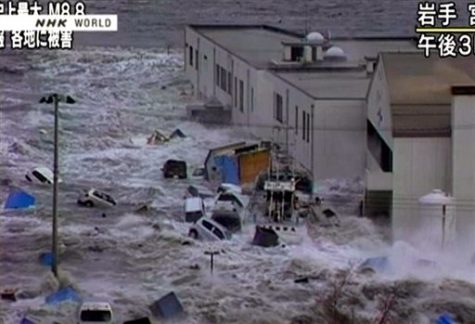
“Seeing the TV, and like, knowing that we were trying to survive at home… there’s so many people dying and the tsunami wiping out all the cities. And Fukushima…we were all speechless, and we started crying because we didn’t know that was happening for three days. It was really heartbreaking to see that.” Tyo also mentioned how Sendai and Fukushima are really close to where they lived in Misawa near the ocean, and so there was great worry that a tsunami would have come to hit them as well (but thankfully didn’t). And another worry was the nuclear meltdowns after the plants exploded, making parts of Japan unsafe with radiation.
After the disaster. Tyo and her family helped donate and was a part of Operation Tomodachi (Japanese word for ‘friend’) that raised funds to rebuild.
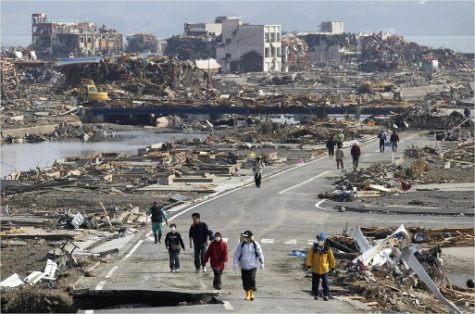
“I think the most amazing part is that everybody in Japan was able to help out each other no matter what. They didn’t stand still and grieve over what happened. They actually helped out each other. Even when all these houses got destroyed, the important stuff left behind wasn’t taken.” The military base started evacuating some people because they were worried about the environmental hazards. “They asked my mom, us, if we wanted to get shipped somewhere in Hawaii, Guam, or somewhere in America to a base there for free. My mom was like. ‘No, I can’t leave because I need to be here with my people. I need to do my best to help out here.’” Tyo added in that flying in the radiation wouldn’t have been safe also.
“I’m Japanese, and that’s like my home. Even though I didn’t experience it first hand, it’s still something terrible,” Tyo says about how the event affected her deeply.
The magnitute-9 earthquake in 2011 was one of the most powerful ever recorded to hit Japan. The earthquake triggered an unforgettable and devastating tsunami that still affects the world today. 15,891 confirmed deaths, and 2,500 still reported missing. For more info.: http://www.livescience.com/39110-japan-2011-earthquake-tsunami-facts.html
Sahuaro Junior Kalena Tyo was born in Tokyo and lived in Japan for 6 ½ years. She later moved to Sahuaro in her sophomore year where she is the most friendliest and artistically talented girl you’ll meet. She misses a lot of things about Japan – such as the funny variety TV shows – and one one day would probably want to go back.
A song that she recommends you to listen to for the 2011 earthquake is “Be the Light” by ONE OK ROCK, a Japanese band. Link to tribute: https://www.youtube.com/watch?v=6SsbwJOKSV4

